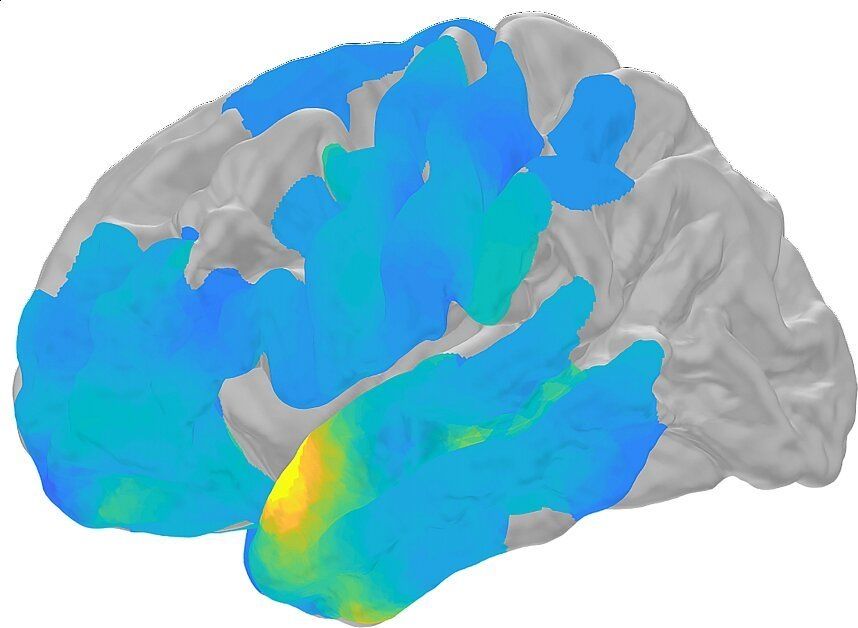Could a black hole delete the universe?
Get the latest international news and world events from around the world.

A Restorative Skin Cream May Reduce Inflammaging
The skin is our first line of defense against invading pathogens, and scientists at UC San Francisco and the San Francisco Veterans Administration (VA) Health Care System believe that it may be a cause of inflammaging, the age-related chronic inflammation that encourages a number of age-related diseases to develop.
As we age, we generally experience a rise in this low-grade chronic inflammation, thus increasing our risk for developing a variety of age-related diseases. There are a number of proposed sources of inflammaging, including senescent cell accumulation, cell debris, immunosenescence, and increasing bacterial burden.
In a previous article, we talked about the potential role of bacterial burden in relation to the microbiota of the gut and the age-related failure of the gut membrane, which allows bacterial contamination to invade the body and increase bacterial burden and inflammation. The gut microbiota has been proposed to be an origin point of inflammaging, and researchers suggest that the skin could be another.

Dead whale found with 88 pounds of plastic in stomach in the Philippines
Messed up is the right phrasing for it, I figure.
March 18 (UPI) — After a dead whale washed ashore in the Philippines, scientists pulled 88 pounds of plastic debris from the mammal’s intestines. The young Cuvier’s beaked whale died from gastric shock, according to biologists.
The necropsy was conducted by scientists at the D’ Bone Collector Museum. They were assigned by biologists with the Philippines Bureau of Fisheries and Aquatic Resources.
“This whale had the most plastic we have ever seen in a whale. It’s disgusting,” museum biologists wrote in a Facebook update. “Action must be taken by the government against those who continue to treat the waterways and ocean as dumpsters.”

Our brains may ripple before remembering
As many labs have established, Dr. Zaghloul’s team knew that our episodic memories are controlled by neurons in at least two different parts of the brain, but they did not know exactly how the cells worked together to retrieve memories. Based on a growing of body of evidence, they suspected that the short, high frequency electrical waves seen in ripples may somehow be involved. For instance, two earlier patient studies suggested that ripples may be important for solidifying memories during sleep.
A sound, a smell, a word can all flood our minds with memories of past experiences. In a study of epilepsy patients, researchers at the National Institutes of Health found that split seconds before we recall these events tiny electrical waves, called ripples, may flow through key parts of our brains that help store our memories, setting the stage for successful retrieval.
“We showed for the first time that ripples may be the neural substrates through which the human brain successfully recalls memories,” said Kareem Zaghloul, M.D., Ph.D., a neurosurgeon-researcher at the NIH’s National Institute of Neurological Disorders and Stroke (NINDS) and senior author of the study published in Science. “These results help us understand how the brain processes the details of our past waking experiences or episodic memories.”
The study was led by Alex P. Vaz, B.S., an M.D., Ph.D. student at Duke University, Durham, North Carolina, who was completing his dissertation work with Dr. Zaghloul. For years, Dr. Zaghloul’s team has been using grids of surgically implanted electrodes to record the electrical brain activity of drug resistant epilepsy patients enrolled in a trial at the NIH’s Clinical Center. The recordings have helped identify the source of a patient’s epileptic seizures as well as provide an opportunity to study how the brain encodes memories.

Humans could regrow limbs as scientists uncover a ‘DNA switch’
It is decades away but a team in Germany did use a regenerative method on an amputees finger stumps with positive results in 2003.
Scientists from Harvard University in Massachusetts have discovered a ‘DNA switch’ that we could use to grow back parts of our bodies like animals who can regenerate, like jellyfish.

Skin-deep microchips pave the way for ‘transhumanism’
Last year, the Japan Transhumanist Association, a general incorporated group that aims to promote transhumanism in Japan, used Twitter to solicit volunteers for free chip implants. More than 20,000 people applied, and 20 are currently being prepared for the procedure.
With microchip implants, humankind has taken a step toward what future-minded experts predict will be a world filled with cyborgs, but Japan lags behind other countries in this regard.
The microchips inserted under the skin are currently limited to such tasks as opening doors and paying for small items, like drinks.
However, Yuichiro Okamoto, a professor of philosophy at Tamagawa University who is well-versed on the ideological background of science and technology, says the implants are just the beginning of “transhumanism,” the theory that science can allow humans to evolve beyond their current physical and mental limitations.

Astronomers have discovered hundreds of thousands of new galaxies in a tiny section of the universe
Over 200 experts worked on developing the new radio telescope, which is exploring space in a entirely new way.
- According to an Astronomy & Astrophysics press release, astronomers from 18 countries have discovered hundreds of thousands of previously unknown galaxies.
- Over 200 experts worked on developing the new radio telescope, which will explore space in a entirely new way.
- The telescope’s capabilities may also allow the researchers to delve further into the behaviour of black holes.
According to preliminary findings in a study published in Astronomy & Astrophysics, scientists have recently discovered hidden galaxies in our universe — and they’ve found hundreds of thousands of them.
Together, over 200 experts across 18 different countries have developed a new radio telescope that will explore space in a completely new way.

Amazon removes books that promoted an autism ‘cure’
NEW YORK (AP) — Amazon has removed books from its website that promoted “cures” for autism, the latest major company to try to limit the amount of misinformation related to autism and the bogus notion that it’s caused by vaccines.
The Center for Disease Control and Prevention says there is no cure for autism spectrum disorder, only medications that can help some function better. It also says there is no link between vaccines and autism.
An Amazon.com Inc. spokeswoman confirmed the books were no longer available, but did not answer any additional questions.

Our Planet: 8 Stunning Views of Earth from Space
Storms that stir sediment like watercolors. Chunks of ice that arrange like mosaic tiles. And swaths of desert sand that layer like oil paint. We have compiled a book of awe-inspiring NASA Earth satellite images. Discover the beauty of our 4.5-billion-year-old planet: https://go.nasa.gov/2JikEvm